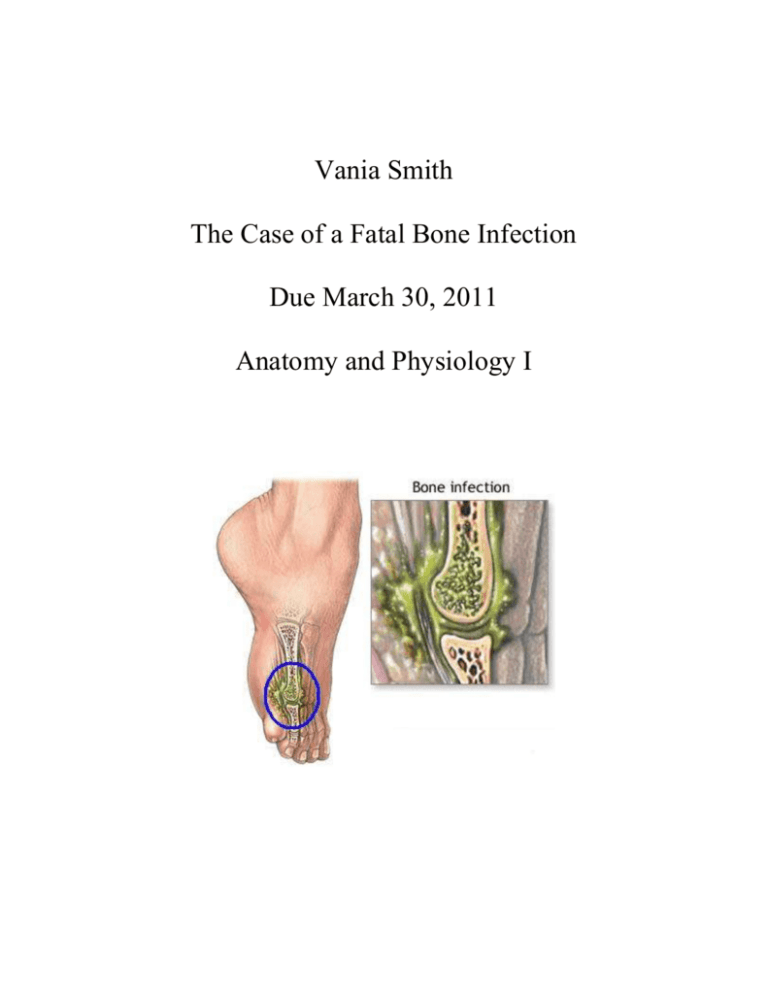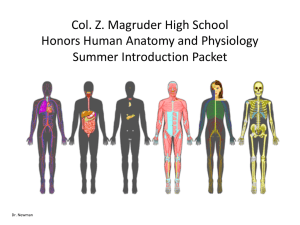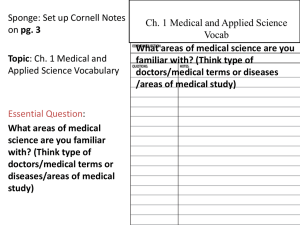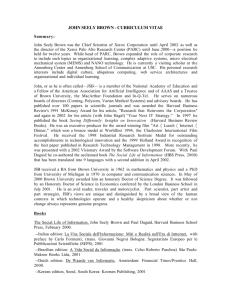File
advertisement

Vania Smith The Case of a Fatal Bone Infection Due March 30, 2011 Anatomy and Physiology I Introduction Susan is a 20 year old female that attended a church potluck. Various dishes were served and after eating the next day, Susan began to develop diarrhea, a fever, and began vomiting. She went to a clinic but was admitted to the hospital because of the severity of her problems. Her blood and stool samples were cultured and she was diagnosed with Salmonella food poisoning. Her symptoms worsened and she began to develop bone pain in her upper right femur. It was suggested that Susan had a bone infection with Salmonella. She developed pneumonia, shortness of breath and entered a coma. Hours later she began having heart fibrillations and died. Question 1: What is an embolus? Why is an embolus dangerous? Answer: An embolus is a plug composed of a detached clog, a mass of bacteria, or another foreign body that travels through the blood stream causing blockage. It is dangerous because it can result in death if the blood vessels become clogged. Reference: Seely’s Anatomy and Physiology book Question 2: What does the term septic mean when applied to an embolus? Answer: Septic means the spread of microorganisms and toxins by the blood. When applied to embolus, septic embolus means an infection of bacteria that occurs in a blood clot, causing it to become detached; the bacterial growth in an organ that becomes thick and dislodges. Reference(s): Seely’s Anatomy and Physiology textbook, case study Question 3: Why is the metaphysis of a bone a site predisposed to thrombus and later embolus formation? Answer: The metaphysis has a sluggish blood flow and is a common place for bacteria to survive and multiply. The site will have an increased blood flow an infection occurs. The bacterial growth may become thick and dislodge as a collection of coagulated blood. Reference: Case Study Question 4: Look at a chart of the circulatory system in an anatomy textbook. Where would you predict that emboli released from the left side of the heart would lodge? Answer: The emboli that are released from the heart would lodge down to the rest of the body and to the right back into the lungs because the blood on the left side circulates to the right side and the right side circulates back to the left side, like a cycle. Reference: Seely’s Anatomy and Physiology textbook Question 5: Intravenous drug abusers are prone to getting microbial infections in their bloodstream, from dirty needles or syringes or skin microbes. Predict, based on basic circulatory system anatomy, which side of the heart the microbes might colonize. If such colonization were to occur, predict where septic emboli would lodge. Answer: The microbes might colonize the right side of the heart. The septic emboli might lodge the left side of the heart because it would spread throughout the rest of the body. Reference(s): Seely’s Anatomy and Physiology textbook, case study Works Cited Seely, R., Stephens, T., & Tate, P. (2008). Anatomy & Physiology (8th ed.). New York, NY: McGraw Hill. The Case of a Fatal Bone Infection Case Study









